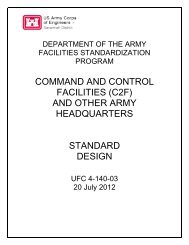1923%20Memoir%20on%20Maps%20of%20Chinese%20Turkistan%20by%20Stein%20s
1923%20Memoir%20on%20Maps%20of%20Chinese%20Turkistan%20by%20Stein%20s
1923%20Memoir%20on%20Maps%20of%20Chinese%20Turkistan%20by%20Stein%20s
Create successful ePaper yourself
Turn your PDF publications into a flip-book with our unique Google optimized e-Paper software.
100 NOTES ON INDIVIDUAL MAP SHEE'L'S [Chap. IV<br />
gap left in our surveys on cither side of the south of Ch'ang-ma (l3.1) n~ial~t be taken<br />
middle So-lo-110 course (C, D. !2,Y), the exact for a link in the rl~ain. The To-lai-shan<br />
counection between the clearly drlined Nan- range may be traccd III the succession of<br />
elran ranges e.zstwards (see Sheet No. 53) high peaks our sheet sl~o\vs ns running to-<br />
and those in this slreet is more ditticult to wards the 'Chu-chia-sl~an' just north-west of<br />
trace. This qurstion of n~orphological Ch'nng-ma, this rhair~ itst.11' having its eonrelationslrip<br />
must be lefL for future expert tinudon in the dirertior~ of tile low but very<br />
investigation. I may I~owevei. record the clistinct range soutl~ of T'a-shih and Ch'iaoinnpressions<br />
derived from what. our surveys tzu (No. 4O.A.5). Finally it is tempting to<br />
in the outer ranges and t.hose of Koborovsky recognize the western extremity of theliichtand<br />
Kozloff along and south of the Su-lo-ho hofen Range, the northernn~ost of all, in the<br />
suggest.<br />
range which stretches from the T'u-ta-fan<br />
The latter sorreys made it appear highly pass (D.l) to the north-west,, the Yao-moprobable<br />
that the high snowy range in the shan and Tung-giieh-shan (C.1) being among<br />
south, called by Itussian esplorers after the its culminating points, and the Su-lo-ho<br />
great geologist, the late Professor Suess, has debouchure below Ch'ang-ma (No. 4,0.B.5)<br />
its coutinuation in tlre big range south of breaking through it. If this assumption is<br />
Ch'ang-ma (.%,B.1,0,) rising to peaks above justified the low hill-chain overlooking the<br />
19,000 and 80,000 feet and crossed by the lower Sa-lo-ho ralley from Wang-shan-tzu<br />
Ta-kung-ch'a pass. The nest range north- (So. 40.A.5) to Tun-11uang might well<br />
ward, called after the Emperor Alesander 111, prove the last western outlier of the same<br />
mau svell be connected wit11 the one irhich range.<br />
our route from the T'a-sl~ih river showed A(/rlitiot~. A. 1. T11e name ' T'a-sl~ih<br />
as striking xith an approximately west-east R.' sllorlld be s11on.n in blue along the riverbearing<br />
from near Shih-pao-c11'Cng (A. 1) ; the bed ljassi~~g Slrih-pao-c11'tn~.<br />
coi~spicuous massif of the Erh-lung-shan<br />
Astrono~~ricaily obaczri.td 1,rtit t~des.<br />
190G-08. Shill-l)ao-cl~'&ng, Camp IS8 (on right bank of ric-PT-bed, half a mile<br />
N. of ruined fort; A. 1) ... ... ... 33O 4.9' 3"<br />
Ch'ang-ma-pao-tzo, Camp 193 (temple near west wall of central<br />
village; B. 1) ... ... ... ...<br />
Ch'ing-ts'ao-an-tzo, Camp 197 (near temple; D. 1) ...<br />
39" 51' 45"<br />
3!1° 53' 35"<br />
The area surveyed in this sheet during<br />
the spring and summer of 1914 con~prises<br />
the south-eastern extremity of the Pei-shan,<br />
the eastern portion of the Hoa-hai-tzu basin<br />
and a part of the wide trough in which the<br />
rivers of Kan-chou and Su-cl~ou (Pei-ta-ho)<br />
unite to form the Etsin-gol. Tile positiorrs<br />
accepted for An-hsi and Su-thou served for<br />
the adjustment of the plane-table work in<br />
the latter two sections, while the traverse<br />
through the Pei-shan was plotted rlpon the<br />
two terminal points of Barkul (No. ;$-I,. B.1)<br />
and Mao-mei (L). 4.). For the latter place<br />
a latitude observation was available, the<br />
longitude value beinx derived froin the nleall<br />
of two independent traverses from Su-chou.<br />
Historical and antiquarian interest is<br />
imparted to the ground in the south by tl~e<br />
line of the ancient Chinese Livles, the re-<br />
mains of which 1 succeeded in traciug from<br />
NOTES ON SHEET No. 41 (CHIN-T'A)<br />
the fiua-hai-t.zu basin to the point where it<br />
crossed the Etsin-go1 below tile northern<br />
end of hIao-nlei cultivatiou. For a brief<br />
account of this border-line and the forbidding<br />
desert ground through which most of it<br />
was constructed, see Geoggl.o21l/. Jou~nal, 1916,<br />
xlviii. pp. 190 sq. The ground at and beyond<br />
the oasis of Chin-t'a (B, C. 4) which I<br />
visited in 1907 on my first fruitless search<br />
for the Limes line in this .direction, is described<br />
in Soi~ctliu, iii. p. 113-1..<br />
The south-eastern portion of tlre Peishan<br />
shown here completely shares the<br />
character of the utterly barren ranges and<br />
plateaus adjoining to the north-,vest and<br />
briefly describe11 in the notes on Sheet No.<br />
40. The iifth and soutl~ernmost of the<br />
Pei-shan ranges was crossed by our route<br />
south of the coal pits of RIou-wo (B. 3).<br />
In the eastern part of the I-Iua-hai-tzu






